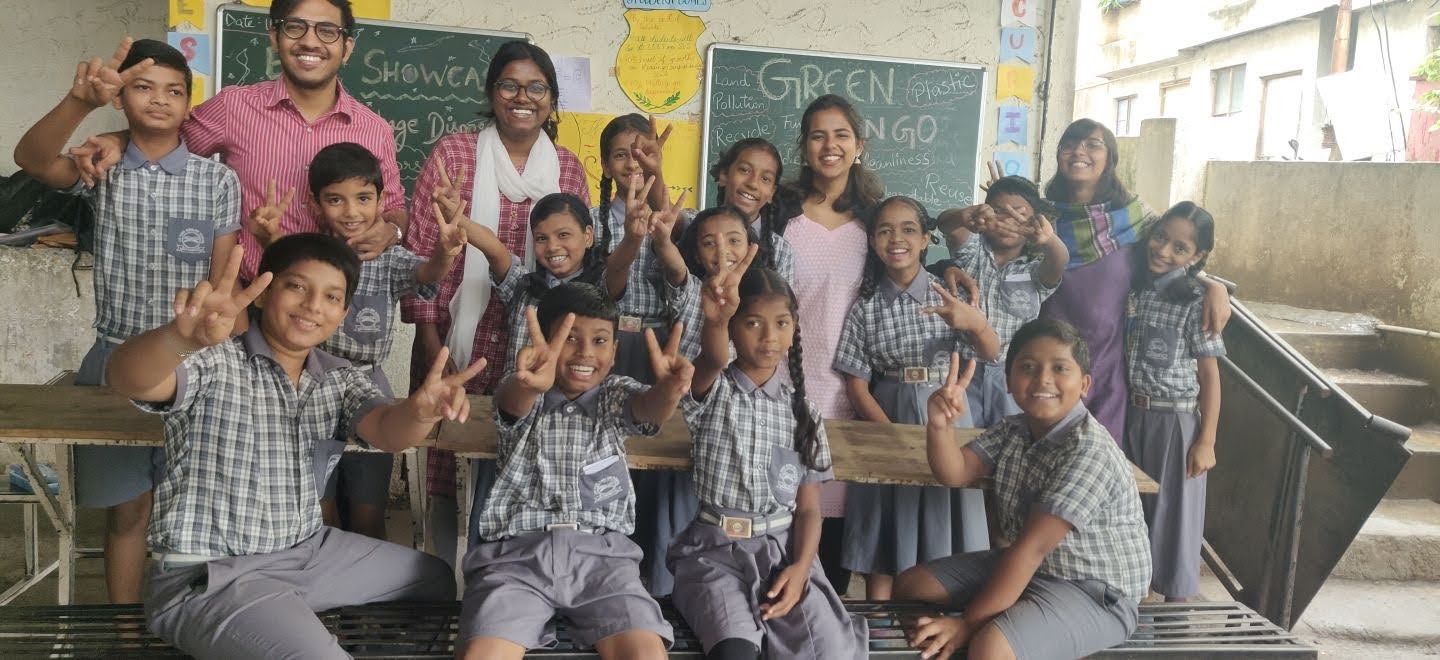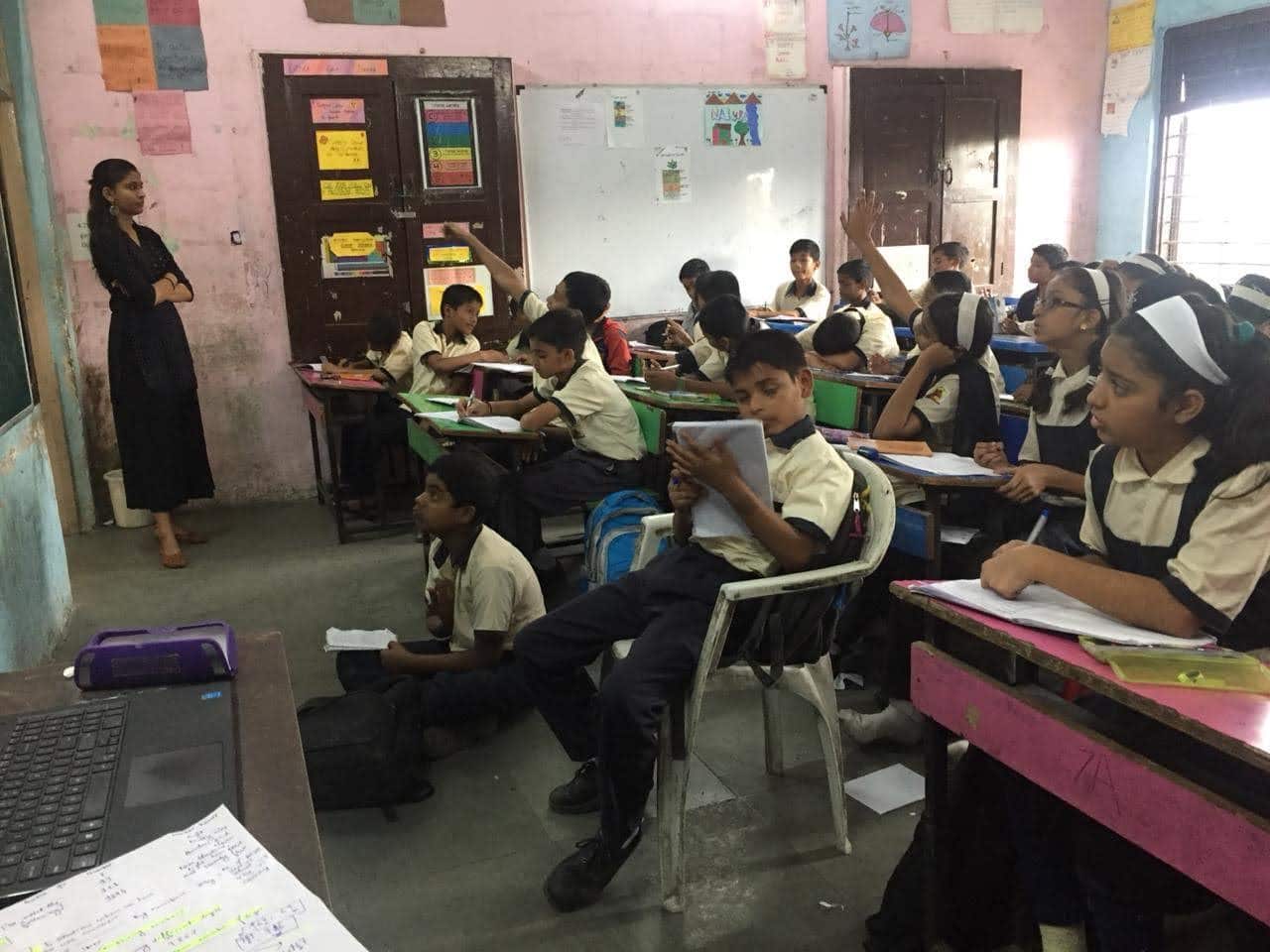
The Teach for India Fellowship is a 2-year teaching program for recent graduates who are Indian citizens or of Indian origin. Fellows work as full-time teachers in under-resourced and low-income schools. Through teaching in classrooms and working with key education stakeholders like students, principals, and parents, Teach for India fellows get hands-on experience in the grassroot realities of the Indian education systems. They also acquire the knowledge, skills, and mindset necessary to become positive changemakers for educational equity throughout India.
We talked to Trisha Sharma, a 2019-2021 Teach for India Fellow, to learn more about the program and get some application tips.
1. What inspired you to apply for the Teach for India Fellowship?
Being a military kid, I accompanied my father to most of his postings, translating to experiencing changing topographies, cultures, and races. By the time I was 17, I had already moved 14 times. However, while changing all these places and experiencing the diversity, one theme I found that remained prevalent throughout the length and breadth of India I had covered was the inequitable distribution of resources.
My own education bore the brunt of the inequitably distributed resources. As I changed places, I had the opportunity to study in convents equipped with the best teachers to schools literally made out of Soldiers’ barracks having a make-shift arrangement for teachers. This occurrence brought me face to face with the issue of lack of infrastructure, human resources, and consistency.
My internship experience in one of the poorest and backward states of India, Bihar, convinced me that education could be a powerful tool to bring in sustainable and scalable social impact. Teach For India seemed like a place that offered to do more than that, such as tackling educational crises, and encouraging finding solutions to complex problems a child, a mother, and a family goes through. Their vision and mission of providing excellent education to underserved children resonated with me. By being part of the fellowship, I hoped to gain grassroots experience of existing crises and gain credible leadership experience to think about innovative solutions to complex issues that would help us as a community to grow and glow.
2. What have been some of the most eye-opening moments during your fellowship?
One of the most eye-opening things in my first year of fellowship was my understanding of poverty vs. what it was in reality. Before joining the fellowship, I had an idea that poor households may not eat in food chains like Mcdonald’s, KFC, and Subway that often. However, I believed that they would have had their food at least once in a while. I would often quote McDonald’s, KFC, and Subway examples until I found my student’s faces blank. They had absolutely no idea what these entities were, and that made me realise the divide between the privileged urban class and the community that occupies the same urban spaces but are left. They become part of parallel realities consequential to the broken promises of advancement made by the economic system, ultimately leading to worsened living conditions resulting from capitalism’s continual expansion. The fellowship brought me face to face with the unapologetic and unequal consequences of capitalism. This eventually inspired me to advocate for inclusive capitalism because this affects too many people in this world.
In the second year of fellowship, when the pandemic hit us, it further pushed our efforts backward to bridge the inequity as now the digital divide become a profound obstacle to overcome. In a country where even proper food is not available to the poor, how was digital infrastructure to be provided to them then? What helped me operate in this situation and refine was the sense of possibility. Our lessons were conducted on community phones; the photocopier shop in the community provided significant assistance in printing and delivering asynchronous learning packets to the children helping them to keep learning. Optimizing donor funds helped in providing digital devices to many who needed them to continue learning. One of the profound realizations that hit me was the community network of sharing resources in underserved societies is very strong and effective, something we should all follow.

3. What tips would you give others applying to the Teach for India Fellowship?
I’d like to tell the candidates is to apply as early as possible. The first round of applications usually opens around August. What Teach For India looks at in the candidate is their passion and commitment to bringing in change and their leadership potential.
The first round of fellowship selection would entail an application and an online test. The application would ask you to provide answers to their essay-type questions. This is your moment to shine and write powerful stories and inspirations that motivated you to work for the community. The online test will give you some situations regarding which you will have to make some judgments and basic English skills like solving the comprehension and filling in the gaps in sentences.
If you make the cut for both you will advance to the telephone interview. In this interview, they will dwell on some things you would have mentioned in your application so be sure to save your answers somewhere to constantly look them up to build a robust explanation for the same. While you give the telephone interview, have clarity in your head regarding your own vision and how it aligns with the mission of Teach For India.
Post the telephone interview, if you advance, you’ll be called the assessment center. This will be a full-day affair, so don’t forget to carry water, food, and lots of energy bars (you will need them!). To be better prepared for the assessment, try, learn, or youtube how to make lesson plans, execute classes, and handle minor breakdowns. If the assessors introduce minor breakdowns in your flow of the lesson, don’t shake but handle it with grace and poise. This is what they want to see how do you handle the unexpected twists and turn that you would face in your fellowship journey too. On the same day, you would also have a group discussion and personal interview.
The direction you should choose in group discussion should be to display collaboration and move/push towards finding a solution to whatever situation is presented. For the personal interview, have a mental map of your sources of motivation and the skills you can deliver on the table, as this will help you align your answers with everything you have to offer.
Candidates interested in applying for the fellowship must think it through and be consistent in their efforts through the two years. It’s a significant commitment of your time for those two years.
Trisha graduated with a triple major in Journalism, Psychology, and English and has a deep understanding of Interdisciplinary humanities, she is also highly people-oriented. Being an Army kid, Trisha changed 10 schools in the span of 12 years. Her experience in different topographies made her face the inequitable distribution of resources prevailing through the length and breadth of India.
In college at Christ University Bangalore, she got deeply involved with volunteering work to uplift the underserved communities that made her realize education can be an effective tool to change the inequity in the world and thus soon after joined the Teach For India fellowship. She is now a full-time organizational development professional with a non-profit and a part-time advocate for inclusive capitalism. In her spare time, she likes to indulge in trekking and spending time with nature.
Interested in applying? Bookmark the Teach for India Fellowship to your ProFellow account.
© ProFellow, LLC 2021, all rights reserved.